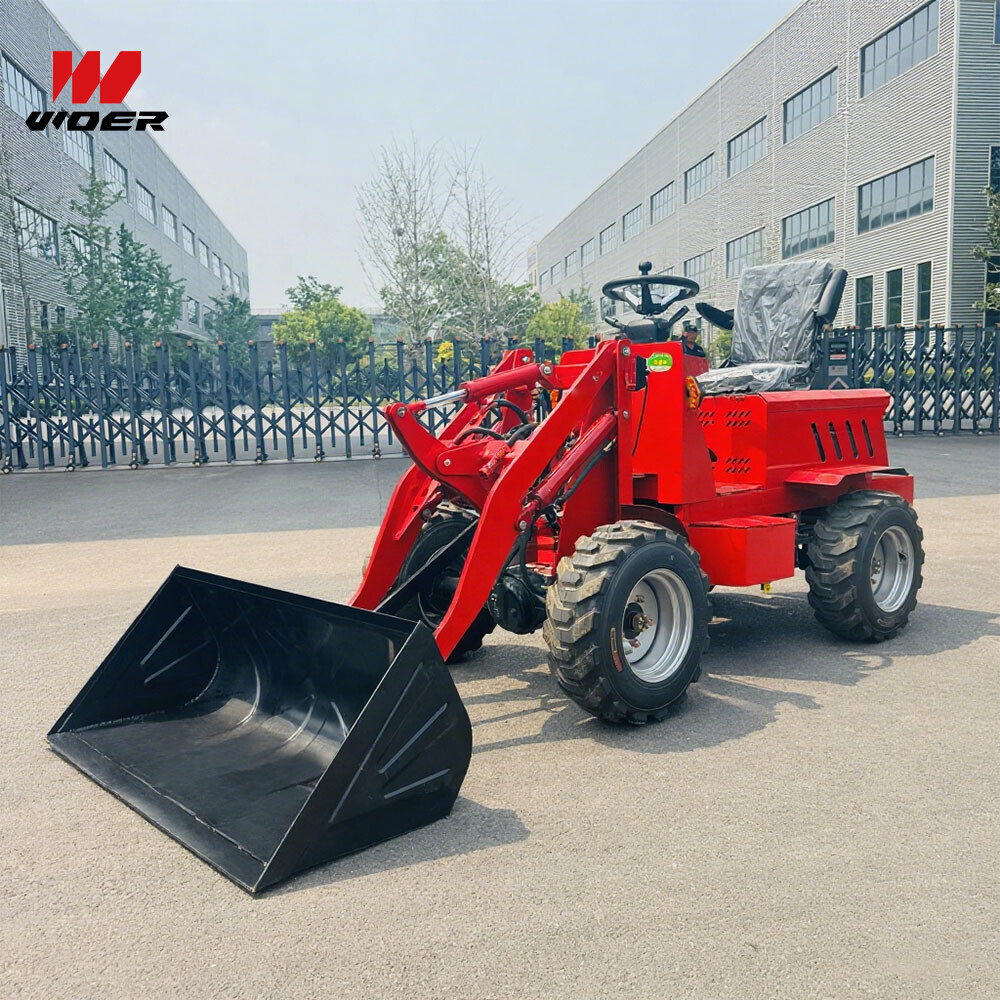Navigation
Contact us
Phone
Message

How to use an electric loader ?
As environmentally friendly and efficient construction equipment, electric loaders operate similarly to traditional fuel loaders, but require special attention to battery management and other aspects. The following are detailed steps and precautions:
1. Pre-Operation Preparation
Check Battery Status
Confirm the battery level: Check the remaining battery charge on the instrument panel. It is recommended to charge the load when it is below 20% to prevent battery life from being affected by a low battery.
Check the charging port: Ensure it is dry and free of debris, and the charging cable is not damaged. (If charging has just completed, disconnect the power cord before restarting.)
Equipment Inspection
Tires/Tracks: Check tire pressure and track tightness to ensure they are not loose or excessively worn.
Hydraulic System: Check the hydraulic oil level and line seals to prevent leaks.
Operating System: Test the smooth lifting and tilting functions of the bucket, boom, and other components, and verify the sensitivity of the joysticks and pedals.
Site Preparation: Clear the work area of any obstacles (such as rocks and debris). Verify the ground's load-bearing capacity to avoid overloading on soft surfaces. If working in an enclosed space, ensure proper ventilation (although electric equipment does not produce exhaust, dust and other pollutants should be avoided).
II. Operation Procedure
Start the Equipment
Insert the key or press the start button. Wait for the instrument panel to complete the self-check (typically displaying information such as battery level and fault codes).
Fasten your seatbelt, adjust your seat and mirrors, and confirm that the operating mode (e.g., "Work Mode" or "Travel Mode") is correct.
Basic Operation
Travel: Control the direction using the joystick or steering wheel. Slowly apply the accelerator pedal (electric equipment responds quickly, so avoid sudden acceleration). Pay close attention to your surroundings.
Loading Operation:
Lower the boom, keep the bucket close to the ground, and push forward until the load is full.
Raise the boom to an appropriate height (avoid excessive height to affect stability), and retract the bucket to prevent spillage.
Move to the unloading point, flip the bucket to complete unloading, and reset it.
Basic Battery Management
Pay attention to battery status during operation. If the battery level is too low (e.g., below 10%), the instrument panel may sound an alarm, prompting the machine to be shut down and recharged. Avoid prolonged idling (electric equipment still consumes a small amount of power even when idling). Turn off the power when temporarily suspending work.
III. Precautions After Use
Shutdown and Charging
Park the equipment securely, place the bucket flat on the ground, apply the parking brake, and turn off the power.
Connect the charger and ensure the charging environment is dry and well ventilated, away from direct sunlight or rain. Disconnect the power cord immediately after fully charging.
Daily Maintenance
Clean the equipment and the bucket from dirt and debris, and check the tires/tracks for rocks.
Regularly check the battery cables for looseness and the hydraulic system for oil refills. Perform maintenance (such as filter replacement) according to the manual.
Safety Tips
Do not overload the equipment (refer to the equipment specifications for specific load limits). Avoid sudden stops or turns that could cause rollovers.
In thunderstorms or battery failure, stop using the equipment and contact a qualified technician for repair. Never disassemble the battery yourself.

This stunning beach house property is a true oasis, nestled in a serene coastal community with direct access to the beach.
Contact
West Street, Melbourne Victoria 3000 Australia